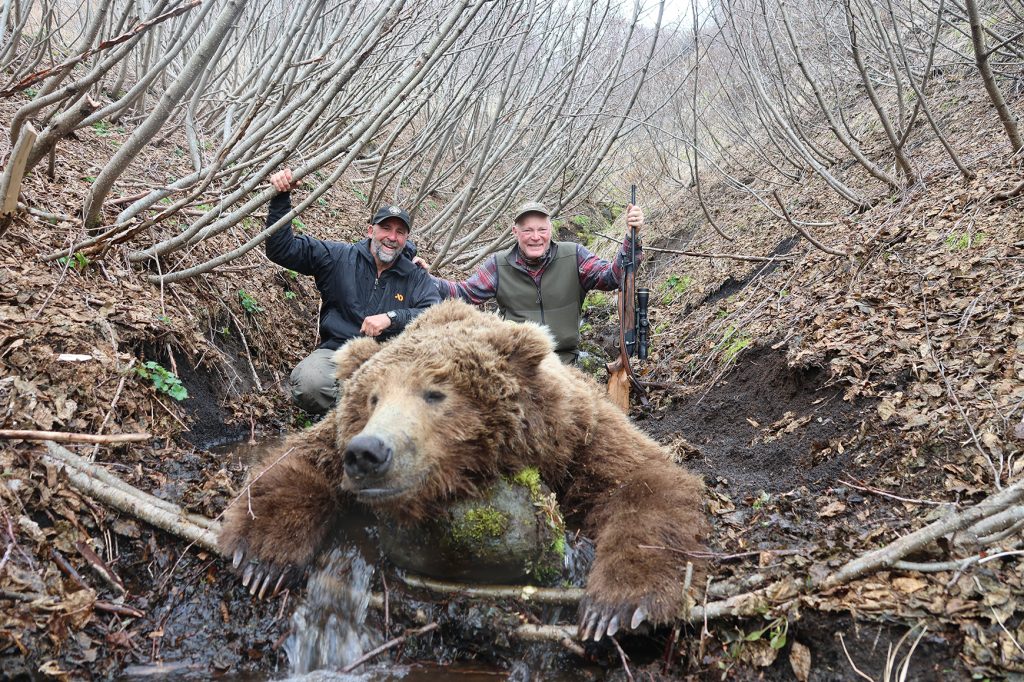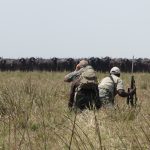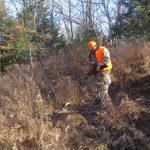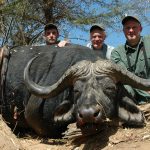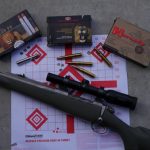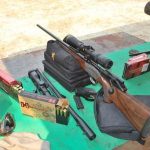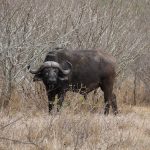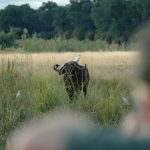When hunting dangerous game, it doesn’t matter how many shots are fired—what matters is that you finish what you started.
If you mess up on a dangerous animal, bad things can happen. Thanks to all the stuff we’ve read and seen on videos, it seems that if you shoot a Cape buffalo poorly, a charge is almost certain, right? Yes, it does happen, and not all charges can be stopped.
In my experience with buffalo, however, if you make a bad shot, a hair-raising charge is not the most common result. More likely, that buffalo will never be seen again. The vital area is not small, but it has lots of non-vital stuff around it. All Cape buffalo seem to surge with adrenaline when hurt. However, their attitudes differ. Some will circle and lie in wait. Others focus on escape.
In the years when we were doing a lot of filming in the Zambezi Valley, the annual quota exceeded a hundred buffalo, so we saw many buffalo shot. It seemed to me nearly one in ten was wounded and lost. This sounds like, and is, a high percentage. Contributing factors include hard ground with difficult tracking. Also, it’s a roadless wilderness. There is no opportunity to leapfrog forward; you just follow the track as far as possible. Many of our hunters were taking their first buffalo. There were lots of jitters.
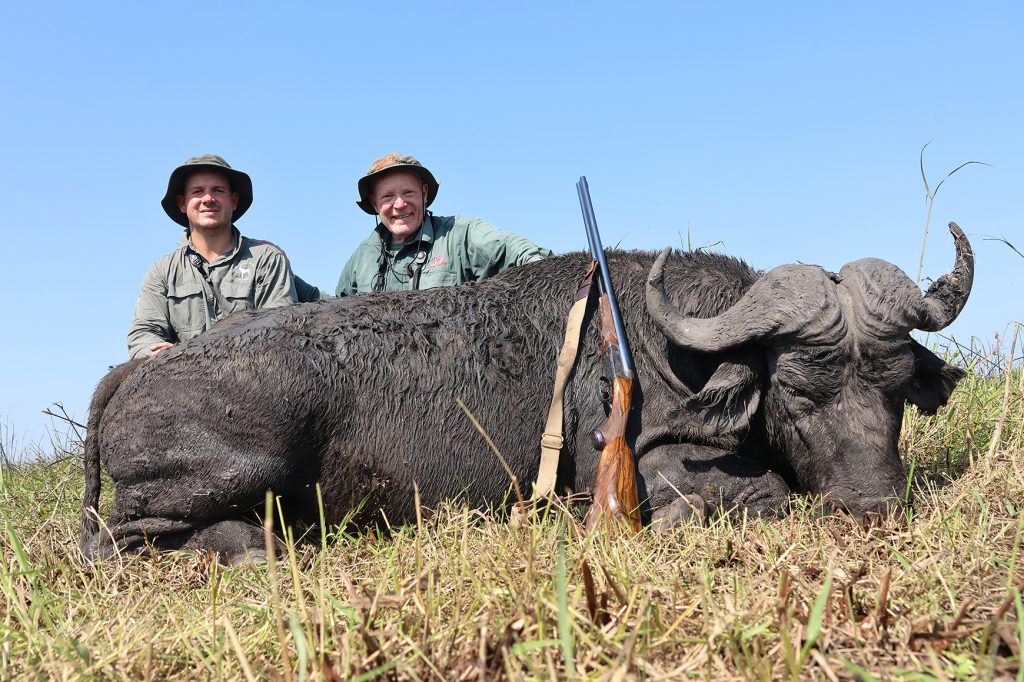
While we lost maybe ten buffalo a season, there were no more than one or two charges. This suggests not all buffalo have the propensity to wreak vengeance. Maybe one in five, perhaps only one in ten. But that’s enough if you draw one of those.
I didn’t hit my first buffalo well, and we lost it. Dark animals have a way of confounding the human eye. The most common error is to see that massive black shoulder and shoot too high, up in that “no man’s land” between the top of the lungs and the bottom of the spine, not much damage, not much blood. On that first buffalo, our trackers thought I shot too far forward, which may be even worse.
I compounded the error by not being quick enough to shoot again. PH Willem van Dyk tried to help. He was carrying a European over/under .458. When he backed me up, both barrels went off simultaneously. While working my bolt, I heard a weird sound like a massive bell ringing. I glanced to my left and saw the rifle spinning end over end, Willem propelled backward. His bullets went into space. Meantime, the buffalo was still running, toward the edge of Mount Kenya’s high bamboo forest.
I can still see my cross hairs on that broad behind as the cover closed around it. I didn’t get the shot off, and 47 years later, I still kick myself for it. Even more now than then, because there’s another statistic I believe in: Of several hundred buffaloes I’ve seen shot, until recently I had never seen a buffalo wounded and lost that was hit more than once in the first encounter.
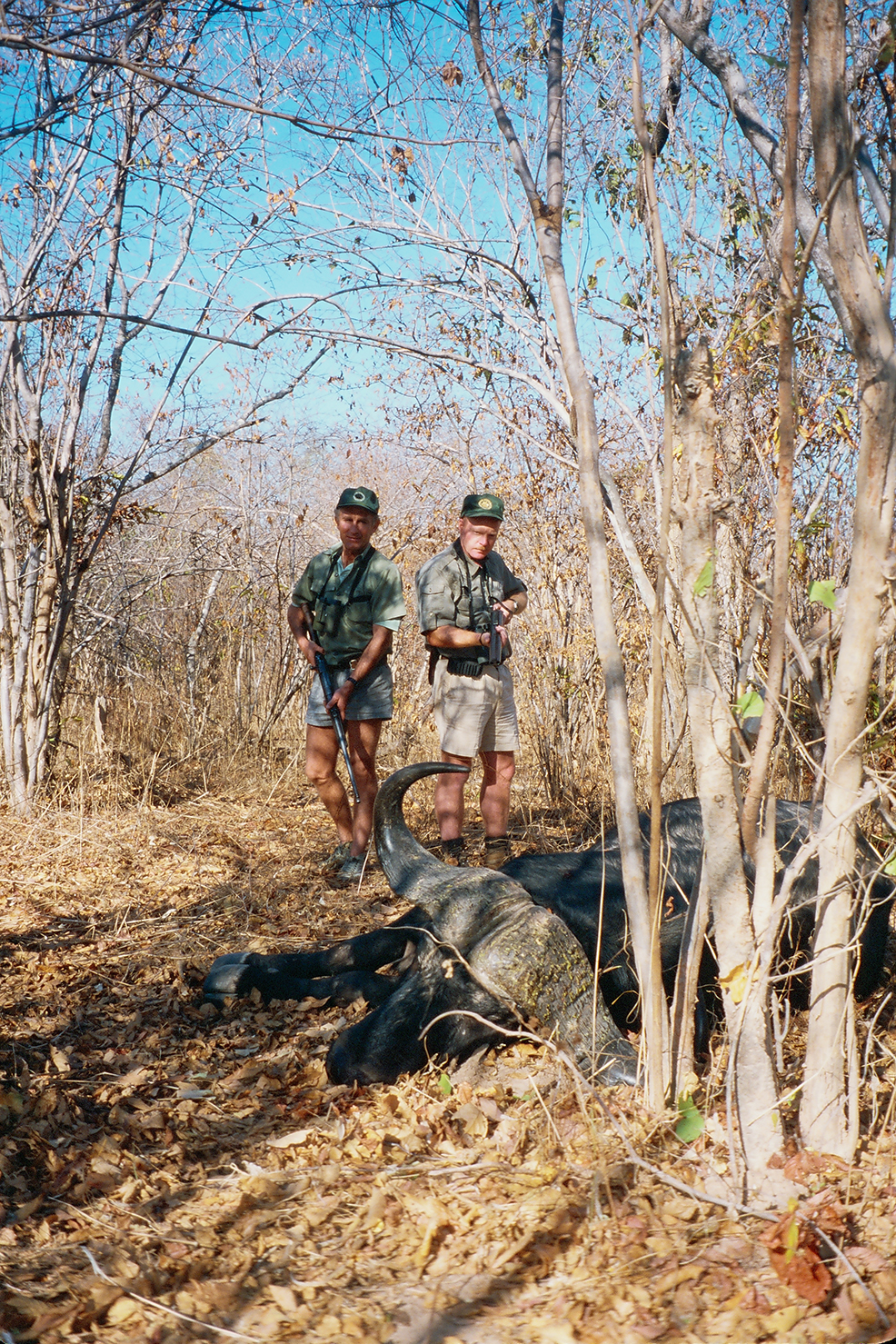
This isn’t to say a buffalo hit only once, even if poorly, can’t be recovered. I’ve been in on a lot of scary tracking jobs, even caused a couple of them. African trackers are fantastic. So long as there’s blood, they can follow. Sometimes they can even follow if there isn’t. It depends on where the buffalo is hit, and whether it stops or just keeps going.
The first shot is the most important, and should be the best because it’s the most deliberate. Despite good intentions, it won’t always be perfect. Even if it is, any bullet can fail. We can’t know until the animal is recovered. Additional shots are usually rushed, often at a moving animal, so ideal shot placement is less likely. Even so, provided the target animal remains clear, I believe strongly that additional shot(s) should be fired.
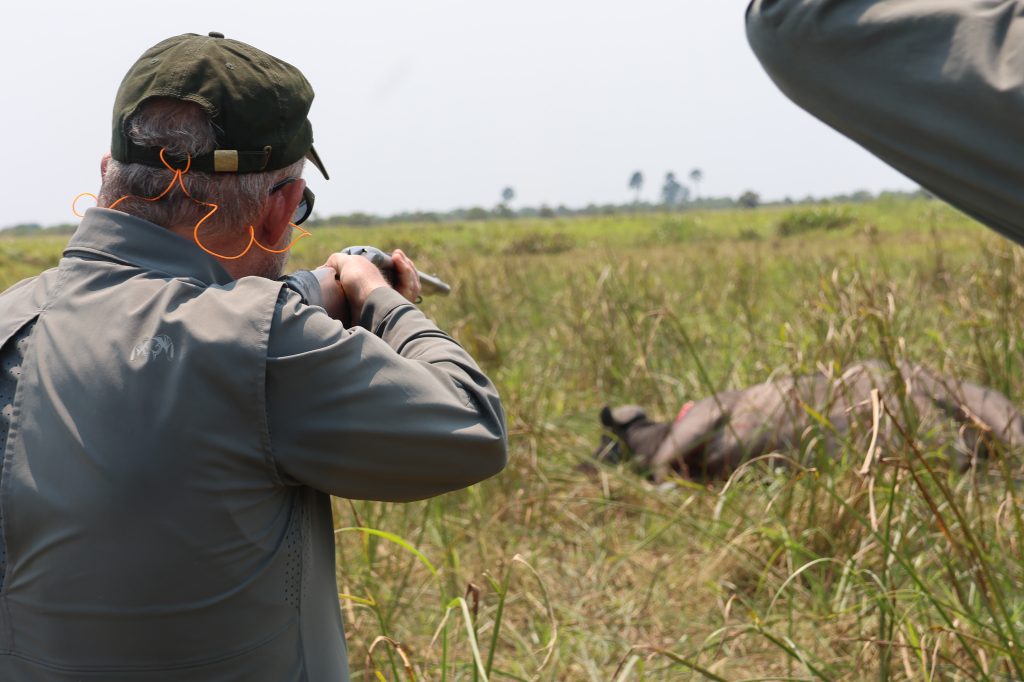
Once the ball game is opened, it needs to be finished. Additional bullet(s) increase the blood trail, perhaps slow the animal, and might reduce danger. For decades I’ve preached the credo to “just keep shooting” if a dangerous animal remains on its feet. I’ve reinforced this with my homespun statistic: I had never seen a buffalo lost that was initially hit more than once.
Until a couple of weeks ago, when I was hunting buffalo with a friend. He took his shot off sticks, quartering to, at seventy yards. The impact looked good–good enough that our PH hesitated perhaps a millisecond too long as the buffalo turned away and ran up a slight rise. At the top, just past a hundred yards, our PH unleashed his double .500. The impact knocked the buffalo down. Then it struggled over the crest, out of sight. We congratulated each other. Then, we advanced over the ridge, fully expecting to find a dead buffalo.
Nothing. Maybe four drops of blood. We had video, and did the instant replay. It hadn’t looked like it, but my friend’s shot was high, into that “not much up there” space. Our PH intended to put a 570-grain solid up the buffalo’s bum. If he had, we would have found the buffalo, or the buffalo would have found us. The video showed that his shot also went high, over the hips and into the top of the shoulder, angling into heavy neck muscle, apparently miraculously avoiding bone. That’s not an easy shot with open sights at that range. We looked for three days, but that buffalo is one that got away. Absent infection, it may have survived.
Regardless of caliber, I must now concede that extra holes offer no guarantee. Even so, on dangerous game, I maintain my mantra to “just keep shooting” until there is clearly no danger. It is essential to practice with a full magazine in a repeater, learn how to quickly use the second barrel in a double, or to practice fast reloading of a single-shot.
On dangerous game I tell my guides and PHs to use their judgment and shoot if they deem it necessary. Naturally, trigger-happy guides are poison. For me, it’s also not good for guides to cling to the ethic “it’s the hunter’s animal” and not fire if collaboration appears called for. Once that deadly ball game is opened, it must be finished. Hunters who practice repeat shots and follow up quickly are less likely to require—or receive—assistance.
Other than a bruised ego, it doesn’t matter who else fired. What does matter is if the animal is lost or someone gets hurt in the follow-up. It also doesn’t matter how many shots are fired.
The buffalo that killed excellent Zimbabwe PH Owain Lewis was hit just once, too far back, in the first encounter. It is unknown if Owain or the hunter had a chance to fire again. The bull was in a group and, often, things happen too fast, or the target animal isn’t clear.
What is known is that they followed intermittent spoor for three days. Many PHs would have given up. Through persistence and great tracking, they found the bull lying down and shots were fired. Instead of succumbing, the buffalo rose and attacked. Owain took the charge and apparently died instantly. In that final deadly encounter, as many as seventeen shots were fired. Sure, we can conclude they weren’t all good. If any of the first few shots took effect, Owain might have survived unscathed.
Shot placement always matters, but in such a wild melee, stuff happens. I’ve never seen anything like that, but African buffalo are incredibly strong. I’ve seen many drop quickly—rarely instantly—to one well-placed shot. I’ve seen others take, well, several shots before giving up. Although every shot should be placed as well as possible, if they are not hit in the brain or spine, some buffalo don’t give up.
With hippos, the brain shot is often what is offered. With elephants, those of us who read too much Karamojo Bell always dream of making a brain shot. With both species, when the brain shot works, it is lights out. When it doesn’t, at least you know immediately. Just keep shooting. On such large animals, the heart/lung shot is not instantaneous, but it is certain. Study the anatomy, place your shot as well as possible, then back it up.
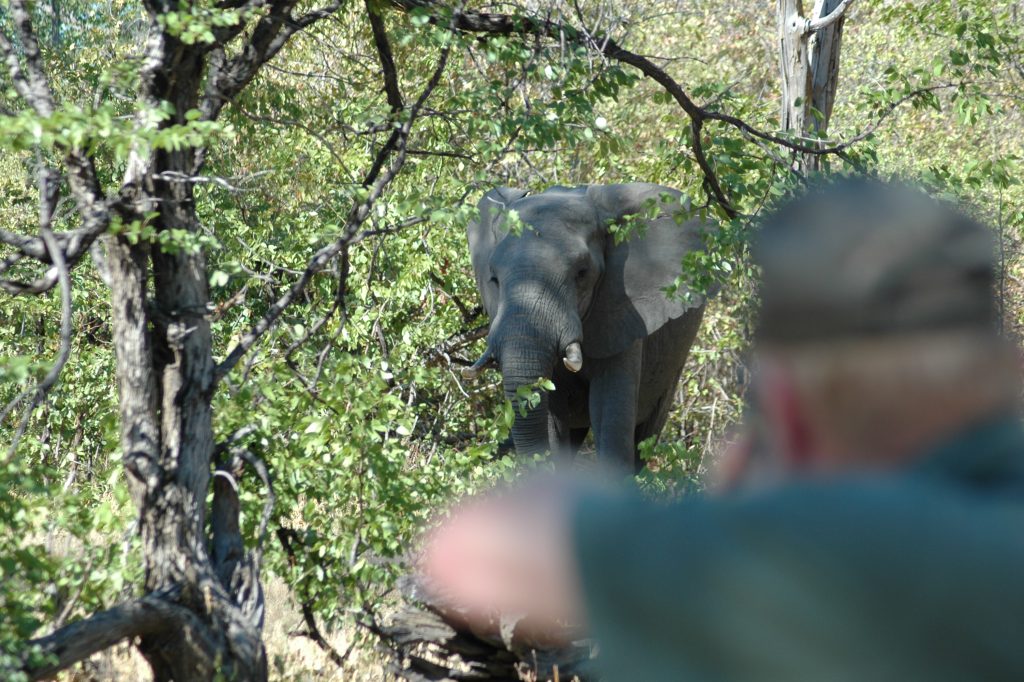
Whether Alaskan brown, polar, or a huge grizzly, the largest bears are similar in weight to a Cape buffalo. I’ve seen big bears fall to one perfectly placed shot, but I’ve also seen them shrug off good hits from powerful rifles. While I admittedly have less experience with bears than with buffalo, I think big bears are buffalo-tough.
Thirty years ago in Southeast Alaska, Jack Ringus and I were backpacking up a valley when another distant hunting team opened fire. I counted thirteen faint shots. There was no satcom back then, so we didn’t know until days later that nobody was hurt; it was just a tough, extra-large bear. That may seem like a profligate expenditure of ammo—it couldn’t happen to you or me, right? Always carry plenty.
This past May, on the southern tip of the Alaska Peninsula, guide Dave Dye and I had a stalk on a big brown bear go awry. We went up a ridge and there was our bear. We were trapped in tall alders and the bear was a couple hundred yards above us, and there was no option to take a rest. I fired, we heard my bullet hit, and Dave knew what to do. We kept shooting, and we got the bear.
